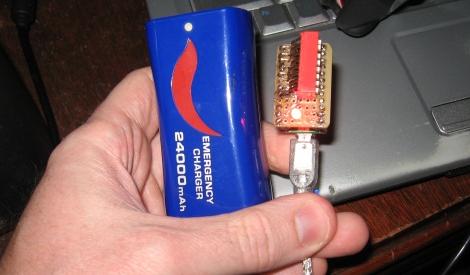Whenever someone manages to expose vulnerabilities in everyday devices, we love to root for them. [Adrian] over at Irongeek has been inspired to exploit barcodes as a means to attack a POS database. Based on an idea from a Pauldotcom episode, he set out to make a rapid attack device, using an LED to spoof the signals that would be received by scanning a barcode. By exposing the POS to a set of generic database attacks, including XSS, SQL Injection, and other errors easily solved by input sanitation, he has created the first version of an automated system penetration device. In this case the hardware is simple, but the concept is impressive.
With the hardware explained and the source code provided, as well as a basic un-sanitized input cheat sheet, the would-be barcode hackers have a great place to start if they feel compelled to provide a revision two.
[Thanks Robert W.]














